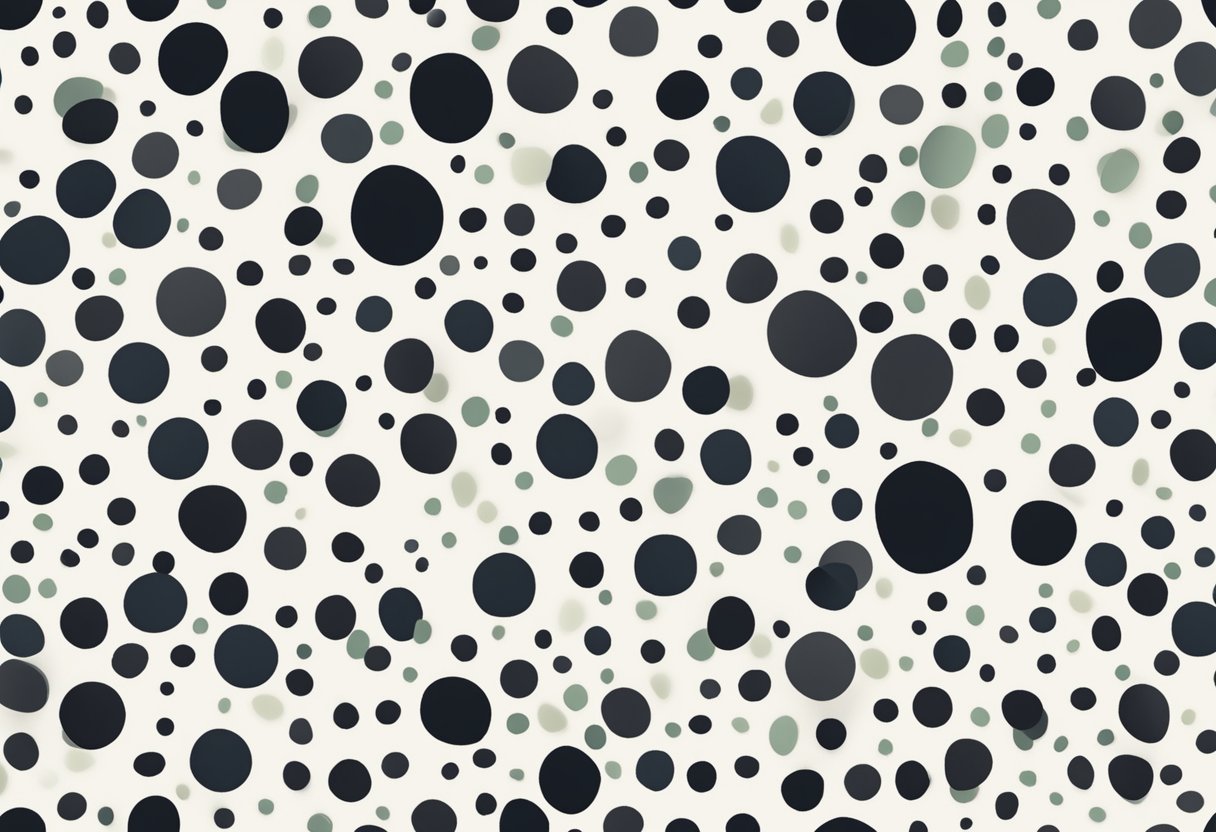Dalmatians are a unique breed of dog that have been popular for centuries due to their distinctive coat patterns and friendly personalities. However, many people do not realize that there are two different types of Dalmatians: those with low uric acid (LUA) and those with high uric acid (HUA). This article will explore the differences between LUA vs HUA Dalmatians, including their physical characteristics, temperament, and exercise needs.

The origin and history of LUA and HUA Dalmatians are rooted in genetics. Before the LUA backcross project, all Dalmatians were HUA and had two recessive genetic mutations of the SLC2A9 gene, which is responsible for converting uric acid to allantoin. LUA Dalmatians were created by introducing the normal gene into the breed through outcrossing with Pointers. Today, LUA Dalmatians are recognized by the American Kennel Club (AKC) and are becoming more popular among breeders and pet owners.
When it comes to physical characteristics, LUA and HUA Dalmatians are very similar. They both have the same coat pattern and body structure, with a muscular build and athletic ability. However, HUA Dalmatians tend to have more urate in their urine, which can lead to kidney and bladder stones. LUA Dalmatians, on the other hand, have normal levels of uric acid and are not prone to these issues.
Key Takeaways
- There are two types of Dalmatians: LUA and HUA.
- LUA Dalmatians were created through outcrossing with Pointers to introduce the normal gene.
- LUA Dalmatians have normal levels of uric acid and are not prone to kidney and bladder stones.
Origin and History of Lua Dalmatians
Lua Dalmatians are a relatively new breed that has been developed to address a genetic defect called hyperuricosuria, which causes the formation of kidney stones composed of uric acid. The breed was created by Dr. Robert Schaible, a veterinarian and Dalmatian breeder who recognized the need for a solution to this health problem.
Dr. Schaible began his work on the LUA (Low Uric Acid) Dalmatian in the 1970s, and by the 1990s, he had developed a breeding program that produced dogs with a normal level of uric acid. The first LUA Dalmatians were registered with the American Kennel Club (AKC) in 2011 after a long debate on whether or not these dogs, that were now 99.999% Dalmatian, were considered purebred or not.
The LUA Dalmatians are bred by crossing a Dalmatian with a Pointer, which carries the normal uric acid gene. The resulting puppies have one copy of the normal gene and one copy of the mutated gene, making them carriers of the hyperuricosuria gene but not affected by it.
The LUA Dalmatians have the same physical characteristics as HUA (High Uric Acid) Dalmatians, with the only difference being their uric acid levels. LUA Dalmatians have a lower risk of developing urate urolithiasis, a condition that causes the formation of uric acid stones in the urinary tract.
Origin and History of Hua Dalmatians
Dalmatians have been around for centuries and were originally bred as carriage dogs. They were used to run alongside carriages and horses, protecting them from other dogs and animals.
The Hua-High Uric Acid (Hu/Hu) Dalmatians were the only recognized breed until 2011. These dogs have a genetic mutation that causes them to have high levels of uric acid in their urine, which can lead to the formation of kidney and bladder stones. This condition is known as hyperuricosuria.
The Hua Dalmatians were bred for their unique spotted coat and their loyalty and intelligence. They were also used as firehouse dogs, accompanying firefighters on their rounds.
In the 1970s, a group of breeders noticed that the Hua Dalmatians were prone to uric acid stone formation. This led to the development of a breeding program to introduce the Low Uric Acid (LUA) gene into the breed.
The LUA gene is a dominant gene that eliminates the risk of uric acid stone formation. It was first discovered in a single Dalmatian in England in the 1970s. The dog was bred with a Hua Dalmatian, and their offspring were tested for the LUA gene.
The Backcross Project was launched in the 1980s to reintroduce the LUA gene back into the Dalmatian breed. The project involved breeding LUA Dalmatians with Hua Dalmatians to produce offspring that carried the LUA gene. These offspring were then bred with other LUA Dalmatians to produce more LUA Dalmatians.
Today, LUA Dalmatians are recognized by some kennel clubs, but they are still relatively rare. They are a healthier alternative to Hua Dalmatians and are a testament to the power of selective breeding and genetic research.
Physical Characteristics of Lua Dalmatians

Lua Dalmatians have unique physical characteristics that distinguish them from HUA Dalmatians. Here are some of the key features that define Lua Dalmatians:
Size and Weight
Lua Dalmatians are medium-sized dogs, with males typically standing between 22-24 inches tall at the shoulder and weighing 50-70 pounds, while females are usually slightly smaller, standing 20-22 inches tall and weighing 40-60 pounds. However, it’s worth noting that there can be some variation in size and weight depending on the individual dog’s genetics and other factors.
Coat and Colors
Lua Dalmatians have the same distinctive coat pattern as HUA Dalmatians, with black or liver spots on a white background. However, there can be some variation in the size, shape, and density of the spots, as well as the overall color of the coat. For example, some Lua Dalmatians may have smaller or more faint spots, while others may have larger or more densely packed spots. Additionally, some Lua Dalmatians may have a slightly off-white or cream-colored coat instead of pure white.
Health and Lifespan
One of the key differences between Lua and HUA Dalmatians is their risk for developing urate urolithiasis, a condition in which urate crystals form in the urinary tract and can lead to painful and potentially life-threatening blockages. Lua Dalmatians are less likely to develop this condition because they have a lower concentration of uric acid in their urine. However, it’s still important to monitor their diet and ensure they get enough water to prevent any potential health issues.
In terms of lifespan, Lua Dalmatians typically live for around 11-13 years, which is similar to the average lifespan of HUA Dalmatians. However, as with any breed, individual dogs can vary in their health and longevity depending on factors like genetics, diet, exercise, and medical care.
Physical Characteristics of Hua Dalmatians

Size and Weight
Hua Dalmatians are medium-sized dogs, with males typically standing 22-24 inches tall at the shoulder and weighing between 50-70 pounds. Females are slightly smaller, typically standing 20-22 inches tall and weighing between 40-60 pounds.
Coat and Colors
Dalmatians are known for their distinctive black or liver spots on a white coat. Hua Dalmatians have a short, dense coat that is easy to maintain. However, they may shed quite a bit, so regular brushing is recommended to keep their coat healthy and shiny.
Health and Lifespan
Hua Dalmatians are prone to developing kidney and bladder stones due to their high uric acid levels. They require a low-purine diet, plenty of water, and frequent potty breaks to prevent this issue. Additionally, they may be more susceptible to certain health issues such as deafness, allergies, and skin problems. On average, Hua Dalmatians have a lifespan of 10-12 years.
It’s important to note that while Hua Dalmatians may have certain health issues, they can still make wonderful pets with proper care and attention. Regular veterinary check-ups, a healthy diet, and plenty of exercise can help keep them happy and healthy.
Temperament and Behavior of Lua Dalmatians
Lua Dalmatians are known for their friendly and outgoing personalities. They are social dogs that enjoy being around people and other animals. They are also highly intelligent and eager to please, which makes them easy to train.
One of the most significant differences between Lua and HUA Dalmatians is their uric acid levels, which can affect their behavior. HUA Dalmatians are prone to urate stones, which can cause pain and discomfort. This can lead to behavioral issues such as aggression, anxiety, and fearfulness. In contrast, Lua Dalmatians are not prone to these health issues, which can result in a more stable temperament.
Lua Dalmatians are also known for their high energy levels. They require plenty of exercise and mental stimulation to stay healthy and happy. They are excellent running partners and enjoy playing games such as fetch and frisbee. However, if they don’t get enough exercise, they can become bored and destructive.
Temperament and Behavior of Hua Dalmatians
Hua Dalmatians are known for their friendly and outgoing personalities. They are generally good with children and other pets, making them great family dogs. However, they can be prone to separation anxiety if left alone for long periods of time.
Due to their high energy levels, Hua Dalmatians require regular exercise and mental stimulation to prevent boredom and destructive behavior. They enjoy activities such as running, hiking, and playing fetch.
It is important to note that Hua Dalmatians can be stubborn and require consistent training and socialization from a young age. They may also have a strong prey drive and may chase small animals if not properly trained.
In terms of behavior, Hua Dalmatians are prone to developing urate stones due to their high uric acid levels. This can cause discomfort and pain, leading to behavioral changes such as restlessness and irritability. To prevent this, they require a low purine diet, plenty of water, and frequent potty breaks.
Conclusion
In Conclusion, both LUA and HUA Dalmatians are unique, friendly, and energetic breeds. LUA Dalmatians, however, are less likely to develop kidney and bladder stones due to lower uric acid levels. Regardless of the breed type, each Dalmatian needs a healthy diet, regular exercise, and proper veterinary care.











































